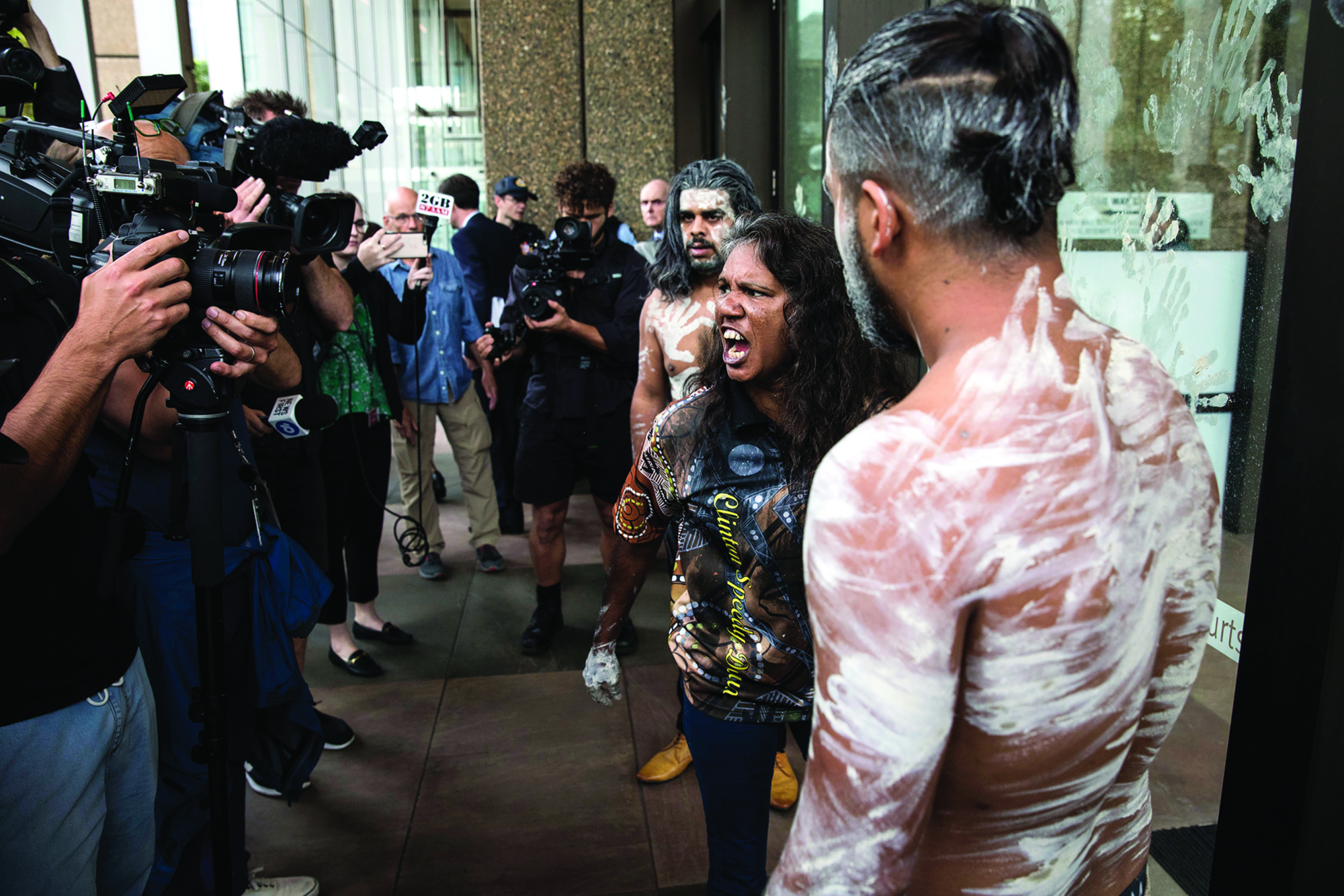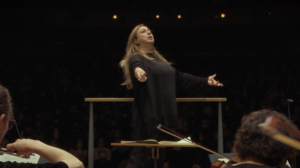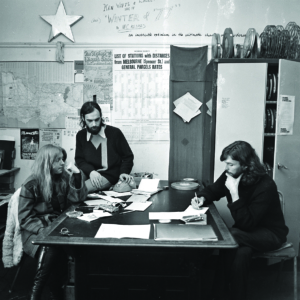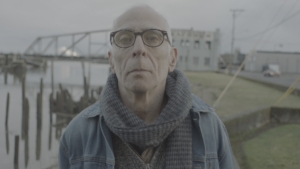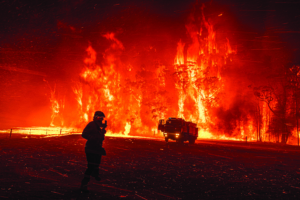Between September 1990 and February 1991, three children went missing from Bowraville, a town of 1122 people on the mid north coast of New South Wales in Gumbaynggirr country, approximately 400 kilometres north of Sydney: sixteen-year-old Clinton Speedy-Duroux, sixteen-year-old Colleen Walker-Craig and four-year-old Evelyn Greenup. Speedy-Duroux’s and Greenup’s remains were found in bushland near Congarinni Road, a few kilometres out of town, but Walker-Craig’s body was never located; some of her clothing was later found under rocks in the Nambucca River. The victims disappeared on separate occasions, but from spots within a couple of hundred metres of one another. The police response at the time was woefully inadequate, and to this day no-one has been convicted over the children’s murders, with their families having spent more than three decades pursuing justice through the legal system.
Muruwari and Gomeroi director Allan Clarke was working on several other projects when producers Stefan Moore and Dan Goldberg first contacted him about the prospect of developing this story into a documentary project. ‘Stefan and Dan recorded the families in a series of court appearances,’ Clarke recounts.
When they showed me the footage, it was so raw, so visceral, so emotional, so absolutely heartbreaking [that] it really hit home. I was struck by the families’ courage and tenacity – especially thirty years after the event. I felt the sheer scale of the injustice, and that it went to the heart of truth-telling.
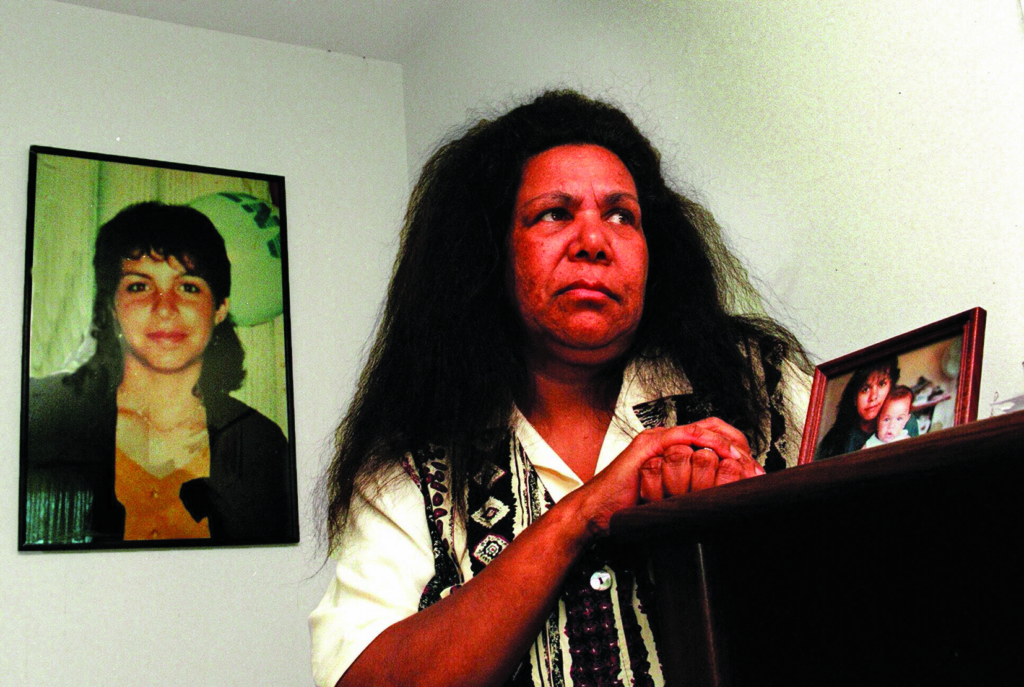
Clarke was immediately interested in making the film, which was released in 2021 as The Bowraville Murders. He was no stranger to confronting injustice, having previously directed Blood on the Tracks, a series developed for the ABC’s Unravel True Crime podcast that investigated the unsolved suspected murder of Aboriginal teenager Mark Haines, whose body was found on a railway near Tamworth, New South Wales, in 1988.[1]See ‘Unravel Season 1: Blood on the Tracks’, ABC website, <https://www.abc.net.au/radio/programs/truecrime/blood-on-the-tracks/>, accessed 20 May 2022.
However, when devising The Bowraville Murders, Clarke did not want to create another straightforward true-crime narrative; he felt this had already been achieved by journalist Dan Box through his podcast Bowraville[2]See Calla Wahlquist, ‘Australia’s Serial: Dan Box on the Making of True Crime Podcast Bowraville’, The Guardian, 23 May 2016, <https://www.theguardian.com/media/2016/may/23/australias-serial-dan-box-on-the-making-of-true-podcast-bowraville>, accessed 20 May 2022. and book of the same name.[3]Dan Box, Bowraville, Penguin Random House Australia, North Sydney, NSW, 2019. Instead, the director wanted to focus on the families. This meant capturing not only the emotional aftermath of the tragedy, but also the families’ subsequent fight for justice and how their Aboriginality impacted this struggle, Clarke says:
What was important, being Aboriginal myself, was to take people into the families’ world. I wanted to go into the families’ homes to show people the ongoing impact of being invisible because of your race, and what that does to a person, to a community. In Australia, the media puts so many stereotypes on Indigenous people. Unfortunately, a lot of Australians still believe them, even though they’re completely wrong. Aboriginal families are just as determined to get justice for their children as white people are. That was the driving force: to educate.
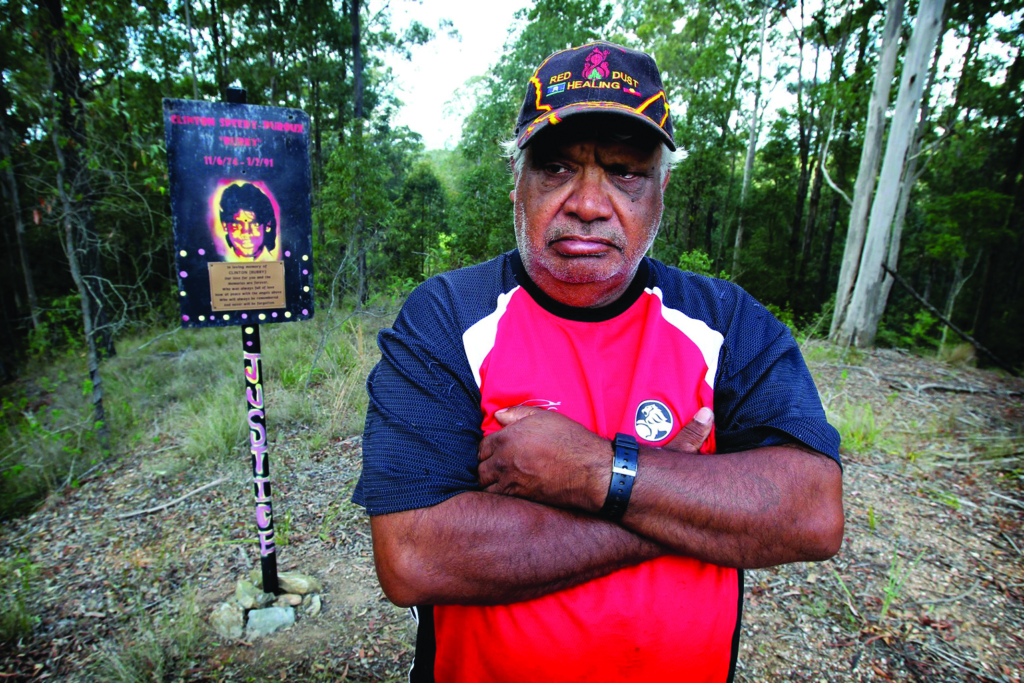
Consequently, Clarke decided against any traditional director–subject relationship. Instead, he sought to work side by side with the families, collaborating closely with them throughout the four-year filmmaking process:
I wanted to be led by the stories the families told me, but I knew the process could be painful, triggering, traumatic. Before signing on, I contacted each family to check they’d like to work with us. We began with a conversation, asking them what they wanted and what was important. We agreed we needed to work out how to have as much impact as possible in [speaking] truth to power, and in having the rest of Australia hear the story and get behind the cause.
Among the film’s opening scenes are interviews – shot in the subjects’ houses and in bushland surrounding Bowraville – with mothers, fathers, grandmothers and aunties, who recount the victims’ disappearances and the hours following. All three recall reporting events to the police station but being offered no help. Greenup’s aunty states that, when she presented a photo of her niece to the police officer within twenty-four hours of her going missing, he replied, ‘What do you want me to do about it? I’m just about to knock off.’ These intimate and disturbing recollections drive the film’s narrative, and were central to how the documentary came together, Clarke explains:
Each interview took a couple of days and was incredibly harrowing. I would begin with a few points I had in mind to raise, then would see how the rest of the conversation went. Once we’d cut a version of the interview, we’d show it to the families to make sure they were happy with it and felt fairly represented, then would take their feedback on board. This meant we had a lot of eyes on the process and a lot of people working to make the story as strong as possible. There was a lot of honest, open discussion.
However, even though the families’ emotional and legal journeys have occurred concurrently, they have experienced them in different ways. For Clarke, representing this meant pursuing unifying themes, but focalising them through the unique personalities of each family member. In one sequence, Muriel Craig, Walker-Craig’s mother, recalls her shock at being investigated by a child-protection officer before a homicide detective had been appointed, while Lucas and Paula Craig express similar misgivings over how their sister’s disappearance was handled; no counselling was provided, the former points out, while the latter states directly, ‘That’s racism at its finest. Why wasn’t there a homicide detective from the start?’
It was important to highlight these individual stories, Clarke says:
There were certain threads we wanted to run through the film. But, at the same time, we didn’t want to lump everyone in the same category. The families were very different to one another, and were made up of unique characters. We wanted to make sure they were represented fairly. Also, the guts of the film – the whole narrative arc – is held together by their emotional stories. We wanted to ensure that, from the very beginning, people watching – including people who wouldn’t usually seek out Indigenous affairs – were empathetic and sympathetic. We wanted them to understand that the families weren’t just a bunch of blackfellas with a chip on their shoulder, but people whose kids really mattered.
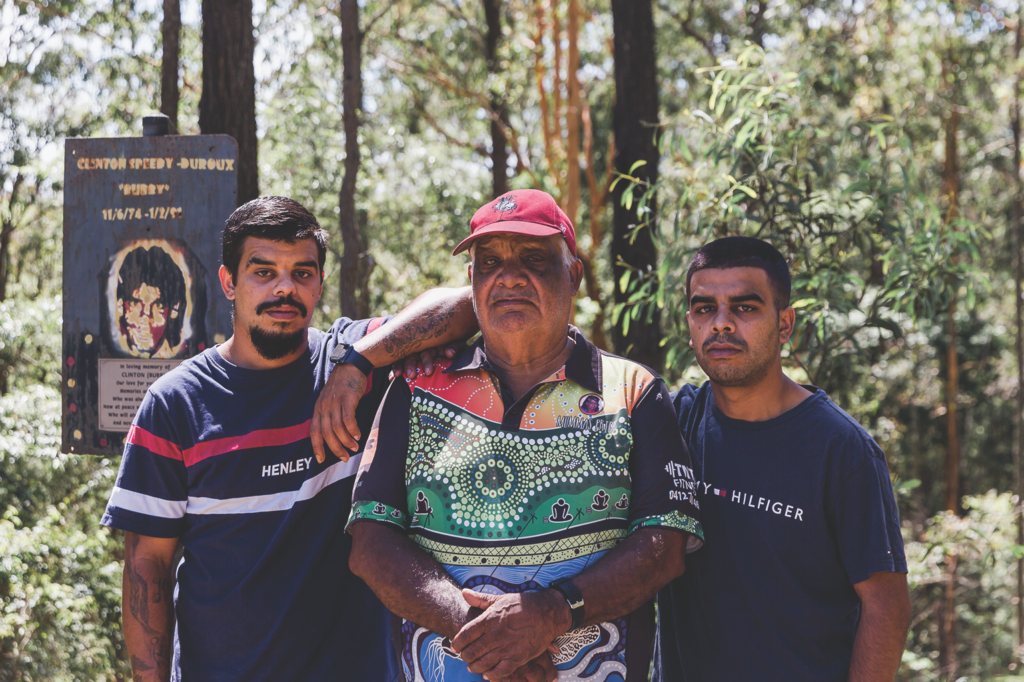
The film adds poignancy to this testimony by placing the families’ experiences in a historical context. The systemic racism displayed by the Bowraville police, we see, was not a unique event, but one with deep roots in Australia’s colonial past. Interlaced with the interviews are scenes shot inside the Bowraville Theatre, in which journalist Stan Grant watches and discusses archival footage of overtly racist comments made by white residents of the town. One states, ‘You can’t trust a bloody blackfella; doesn’t matter where he is.’ Another notes that Aboriginal people must enter the cinema by a different door from the one used by white people. There is a link, Grant asserts, between this historical racism and the failure of the children’s disappearances to ‘resonate’, because ‘they’re seen as something else’. He summarises this lingering racism accordingly: ‘They’re the Blacks. They’re separate. They’re over there. They enter by another door.’
‘We wanted to ensure that, from the very beginning, people watching – including people who wouldn’t usually seek out Indigenous affairs – were empathetic and sympathetic.’
– Allan Clarke
Clarke expands on why he chose to use this material in the film:
We chose the cinema because it was such a strong symbol of segregation. Aboriginal people had to sit right at the front on the floor, while white people were allowed to sit in seats. A lot of Australian towns are full of this history, and segregation happened up until the late sixties and seventies. Looking backwards, our elders now were kids when they were separated.
A lot of people in Australia hear stories of injustice against Aboriginal people and think, ‘That can’t be true.’ But the reality is it’s not out of the norm; it’s an everyday occurrence in the justice system and in our government agencies. We don’t hear about it much because the media toes the line and doesn’t expose things. I wanted to show Australia why our systems are so geared towards institutionalised racism: its foundations are built on colonisation, and go back to when we weren’t considered to have the right to be a victim of a crime.
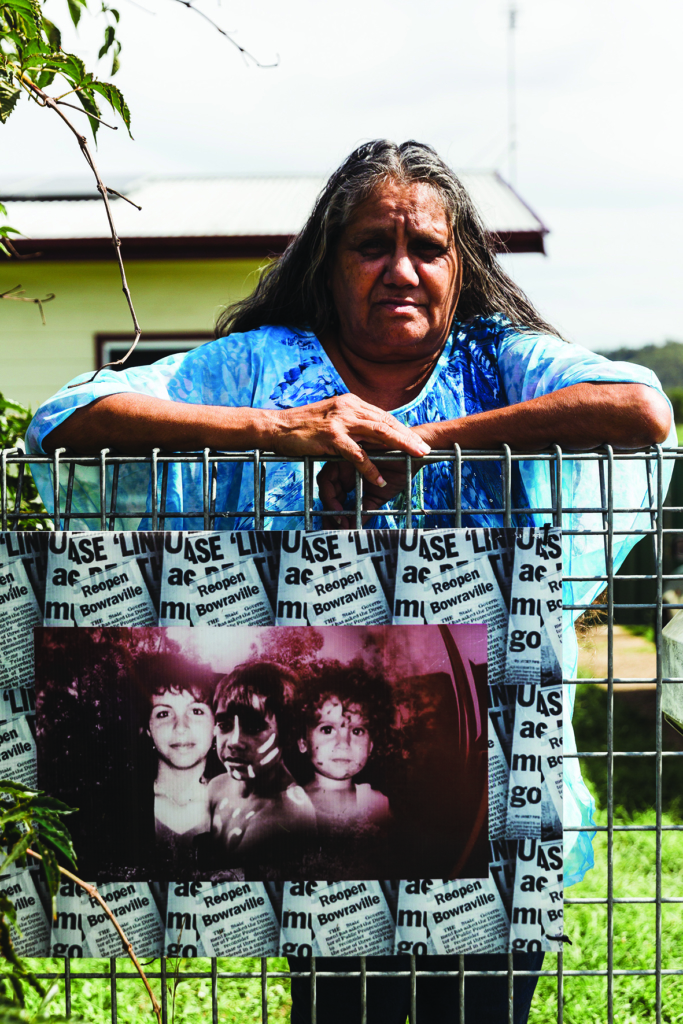
Throughout the film, the camera frequently cuts to Bowraville and its surrounds – from sweeping panoramas of the surrounding mountains, to eerie shots of the forest where the children’s bodies were found, to pans of the nineteenth-century buildings that line the main street. This landscape plays a key role in contextualising the families’ experiences, the director suggests:
I think of the landscape as a character. Bowraville is a small town, ringed by incredible forests, and, as you travel towards the coast, lush pastures. It’s very beautiful, but it’s also very isolated. The Bowraville Mission, on the edge of town, is even more remote. There’s nothing around you. It was important to me to take people onto the land, to show its beauty, but also to show that the beauty hides how much blood has been shed there. It’s a very haunted place, haunted by the ghosts of violence against Black people since colonisation. Over the years, thousands of people have been massacred there, taken off their land, put on reserves.
This history makes the families’ courage, strength and determination in fighting for justice even more striking. Unwilling to accept the failure of the police and the justice system to convict a murderer, the families pursue their cause all the way to the High Court of Australia; but this hasn’t stopped them lobbying for change in other jurisdictions, Clarke notes:
They go from trying to get the police to conduct an adequate investigation to campaigning against double jeopardy laws. Yet hardly anyone in Australia knows about this. It was so important to show how the family members have changed and how they’ve aged over thirty years, but also how they’ve kept fighting – and will keep fighting, for the rest of their lives. This trauma and struggle has passed on to the next generation. Even though it’s something they’d never want their kids and grandkids to inherit, they’ve unfortunately had to take up the baton.
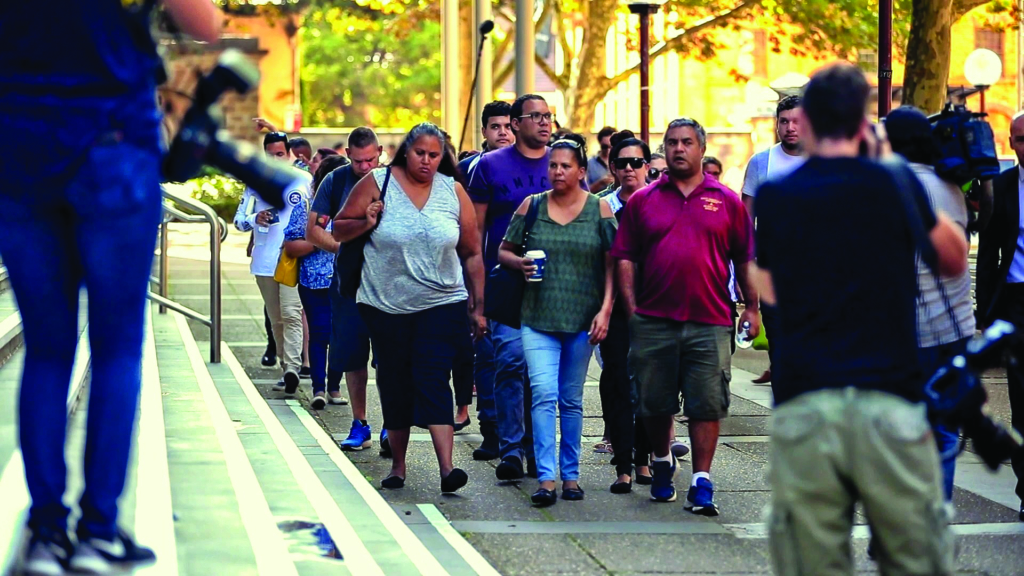
Rather than simply documenting this fight, the director hopes that the film itself may have a role to play in achieving justice for Speedy-Duroux, Greenup, Walker-Craig and their families:
The film is not over now that it’s released. I want it to be a living, breathing thing that people keep discovering and talking about with their friends and communities. Ultimately our hope is that this leads to the next chapter in the families’ fight for justice – that’s the most important thing. I hope that any people out there who have information about the cases will come forward to the police and do the right thing.
https://www.bowravillemurdersfilm.com.au/
Endnotes
| 1 | See ‘Unravel Season 1: Blood on the Tracks’, ABC website, <https://www.abc.net.au/radio/programs/truecrime/blood-on-the-tracks/>, accessed 20 May 2022. |
|---|---|
| 2 | See Calla Wahlquist, ‘Australia’s Serial: Dan Box on the Making of True Crime Podcast Bowraville’, The Guardian, 23 May 2016, <https://www.theguardian.com/media/2016/may/23/australias-serial-dan-box-on-the-making-of-true-podcast-bowraville>, accessed 20 May 2022. |
| 3 | Dan Box, Bowraville, Penguin Random House Australia, North Sydney, NSW, 2019. |
